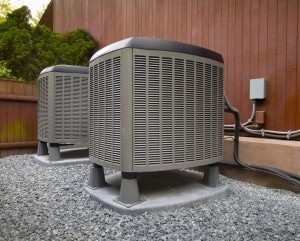
Residential buildings, medium-large industrial structures, commercial buildings, hospitals, vehicles, and marine environments require HVAC ventilation.
It oversees regulating temperature, humidity, and other parameters by bringing in fresh air from the outside.
There are various components to HVAC, but this article will focus on the fundamentals. HVAC ventilation is also essential for people's health and safety.
If you're thinking about buying a new home or a business structure, learn more about these components and why you need Tempe AC maintenance to keep them working.
What Are Heat Exchangers?
Heat exchangers transfer heat from one fluid to another. Heat exchangers are devices for transferring heat from one fluid to another. Industrial cooling and heating are typical applications.
Depending on the size and type of fluid involved, there are various options. The fluid's phase, temperature, and viscosity will determine the type of heat exchanger employed.
It can also be scaled to fit a variety of thermodynamic parameters. As a result, heat exchangers can be employed in industrial ventilation in various ways.
A heat exchanger in an HVAC ventilation system is an essential component of the ventilation system in a building. The device guarantees that incoming and outgoing fluid flows are in distinct directions and provides independent fluid flow in a building.
A heat exchanger is used in a heat-recovery ventilation system to move stale air and bring in fresh air from the outside. This guarantees that a building's ventilation is maintained without reducing air quality.
What Do Return vents Do?
In HVAC systems, return vents are used to exhaust air. These should be installed in every room. A single vent would suffice in a small room, while larger rooms require several.
The size and architecture of the home and the size and type of ductwork installed to influence the number of return vents. An expert can help you determine your requirements based on these criteria. Each room in the house should have at least one return vent, but two or more vents are preferable.
Ensure the area around the return vents is free of debris or dirt before cleaning it. Over time, the vent's grille can become dirty with dust.
To keep dirt out of the system, regularly clean it with a damp cloth.
Maintaining the cleanliness of the grille can also help you get the most out of your air conditioner or heater. Cleaning the grille will also help protect the air conditioning and heating system from contamination. Once you know what to do, cleaning the return vent is simple.
What Are Condenser Coils?
Dirty condenser coils in HVAC ventilation systems can substantially impact indoor air quality. In addition, biological risks might build upon dirty evaporator coils.
They also obstruct the flow of air. The efficiency of your HVAC system will be improved by removing debris and accumulated dirt. Cleaning your evaporator coils can be done in a variety of ways. Here are some pointers to get you started.
Begin by cleaning the evaporative and condenser coils of any loose debris. Next, clean the condenser coils with a condenser coil cleaning solution.
This is available in concentrated or premixed form. If you don't have time to make your solution, apply a concentration and spray it on the condenser coils. After that, clean the dirty residue from the coils.

Get Help With AC Maintenance in Tempe, AZ
To be sure you get your AC fixed in the shortest possible time, Contact Rescue One Air to schedule maintenance or find out more about the best AC maintenance services in your home or office. You can complete the compact form below for a fast response.
You can check out our customer reviews or browse through the Rescue One Air video library to see our AC repair crews in action for further information.
